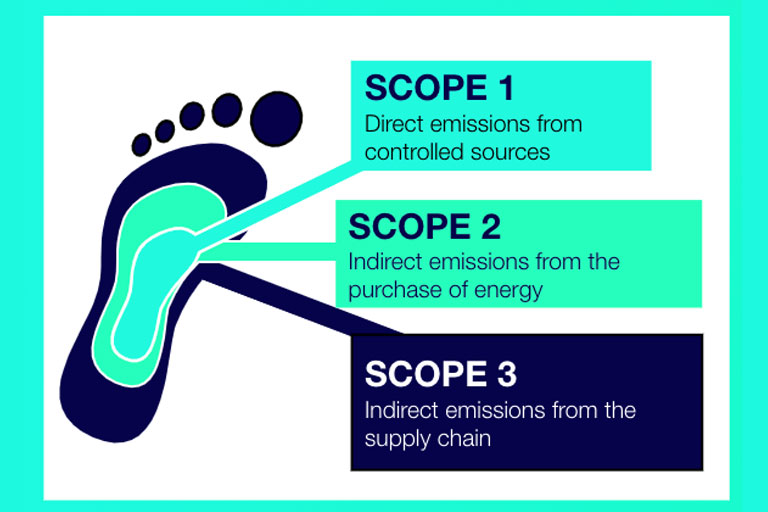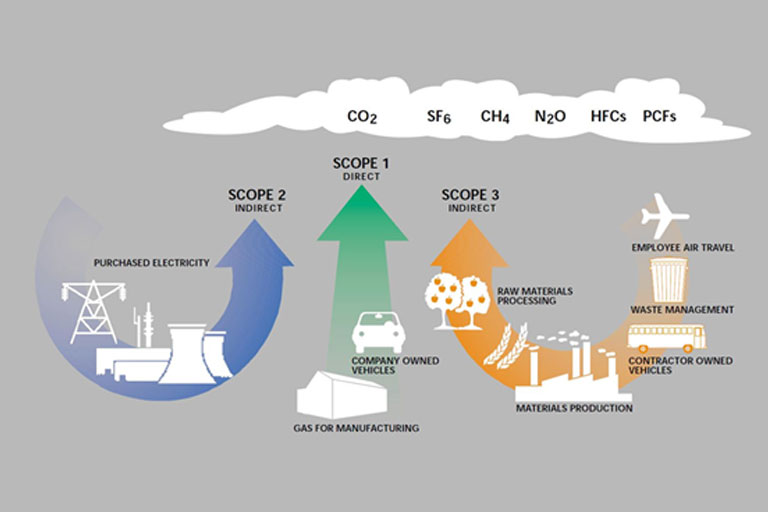07 Jun Sustainability and Carbon Footprint: A Beginner’s Approach

Varvara Machera, Nuevo SA, qualitycontrol@nuevo-group.com
Environmental sustainability is one of the most discussed topics nowadays. It concerns us all, whether you are an employee or you run a business, whether you are a student or a house-keeper. It is important to be up-to-date, so each one of us can contribute in their own way. From small to big changes, all together we can make the difference. But let’s take a look from the industry’s point of view, shall we? What does sustainability mean for an organization and what actions can ensure it?
Although there are many definitions given, from my present standpoint I would choose the following one to better describe sustainability: meeting present human needs without compromising the health of ecosystems or the ability of future generations to meet their own needs. Some consider sustainability as a relationship between environment, society and economy, while others view it as a relationship between human beings and the ecosystem.
In my judgment, all of the above are directly or indirectly connected. If the environment changes, the society will be affected, which in turn will have an impact on the economy. Anyway, a healthy environment is unquestionable.
According to the Paris Agreement, the goal is to limit global warming preferably to 1.5 °C to reduce the effects of climate change. Governments and organizations are setting net zero targets to be achieved by year 2050. Every committed company begins with calculating the GreenHouse Gas (GHG) emissions (6 Kyoto gases in CO2 equivalents) so as to create a reduction and offset strategy. Based on the GHG Protocol there are 3 scopes defined to facilitate the boundaries for an effective GHG management. Scope 1 comprises direct GHG emissions from sources owned or controlled by the company, while Scope 2 is related to electricity indirect GHG emissions. Last but certainly not least, Scope 3 is an optional reporting category dealing with other indirect GHG emissions, which on the contrary result from sources not owned or controlled by the company.

The calculations are followed by the development of a carbon footprint reduction plan. All the possible ways to achieve this are taken into consideration and the most efficient ones are chosen. Next step: the organization defines targets in agreement with its sustainability policy. Some common practices include:
- Employee awareness: appropriate training and motivation
- Energy: reduction or use of renewable & alternative sources
- Vehicles: use of alternatives means for the access to the workplace (such as public transportation or bikes), teleworking when possible, better goods transportation management (e.g., smarter grouping), fleet technology upgrade (i.e., Euro technology).
- Waste management: reuse, recycling.
- Volunteering: tree planting, waste cleaning.
Sustainability constitutes a major chapter, yet the approaches are plenty. The management methods seem to be quite common among the organizations, regardless of each company’s activity. In the long run, there is no doubt that the feed industry should make sustainable commitments. This will generate a bigger purpose for employees, will -eventually- reduce supply chain costs and drive innovation in the company. Following the initial sustainability transition, even greater goals should be set… being a carbon neutral company is definitely one of them, don’t you agree?



